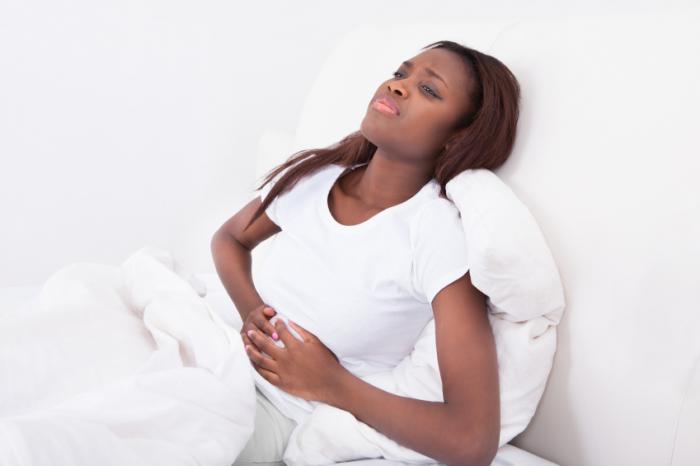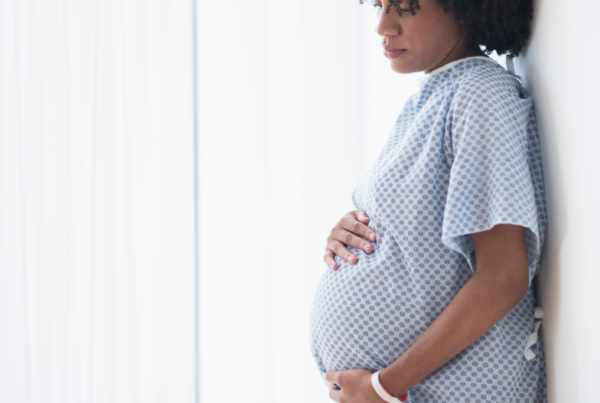Every month, your menstrual cycle provides an opportunity for pregnancy. This occurs when one mature egg is released from your ovaries into one of your two fallopian tubes and the lining in your uterus, called the endometrium, thickens in preparation to receive the fertilized egg.
The released egg is fertilized by sperm that traveled to the fallopian tube after being deposited in the vagina during sexual intercourse, however, if for one reason or another the egg is not fertilized, the uterine lining sheds. This shedding is what causes your monthly flow or menstrual period.
Normally, your menstrual cycle begins on the first day of bleeding and ends the day before your next period begins.
Every woman desires a healthy, normal menstrual period and the ideal is to have periods lasting 3-7 days, coming 28-32 days apart, and without significant menstrual symptoms.
If you’re ovulating normally your chances of conceiving are quite high when you are exposed to unprotected, appropriately timed sexual intercourse.
Last week, we examined the basic structure and function of the menstrual system. This week we’ll continue by looking at common disorders of the menstrual system that may disrupt normal reproductive functioning.
If a woman is above 18 or thereabouts and she has not had any menstrual periods at all she has a condition known as Amenorrhea which means absent menses.
It could be as a result of hormonal disorders or birth abnormalities. A woman that has no periods is usually unable to get pregnant until the cause is identified and treated because a lack of menstruation usually also means a lack of ovulation.
If you are a mature woman and have never experienced menstruation, the diagnosis is primary amenorrhea, and the causes could range from problems with your ovaries, hormones, pituitary gland or a variety of genetic syndromes.
On the other hand, if you have had periods previously and suddenly stop having them, what you have is secondary amenorrhea that could be caused by many factors. These are usually treatable or reversible. They range from hormonal or thyroid problems, polycystic ovary syndrome (PCOS), or pituitary tumours.
Anxiety or depression, severe weight loss, and extreme exercise regimens can also cause a woman’s body to stop menstruation and ovulation.
Normal fertility can usually be restored by lowering stress levels, restoring good nutrition, and in some cases hormonal medication.
A woman may fail to produce a mature egg in a monthly cycle if that happens, the problem is Anovulation, and it may be caused by variety of factors, all primarily related to hormonal imbalances. The good news is that many cases of anovulation are treatable.
Anovulation could be suspected if you’re having irregular periods if you’re not having periods, or you’re experiencing abnormal bleeding or spotting throughout the month. When dealing with ambulation, a proper medical investigation is usually required to confirm whether or not you are ovulating.
If you’re not ovulating, it may be as a result of a series of circumstances. For instance, if you’re undergoing significant weight loss or weight gain, excessive stress, extreme exercise or inappropriate or inadequate nutrition, your ovulation may be disrupted.
The recommended diagnostic testing includes a hormonal analysis or ultrasound testing to screen for ovarian damage which can also inhibit ovulation.
Quite a number of women experience painful periods. If you are among women who do, what you’re having is called Dysmenorrhea, which simply means painful periods or pain during menstruation.
It refers to menstrual cramps or other causes of painful menstruation that could indicate a medical problem with the potential to impact fertility.
Several women experience pain with their periods as a result of the normal contractions in their uterus during menstruation. Such women usually have painful periods from the onset of their menstruating.
However, unexplained dysmenorrhea can indicate a serious medical problem that can also cause infertility and other complications if there isn’t proper treatment. Conditions such as endometriosis, Pelvic Inflammatory Disease (PID), narrowing of the cervix, or fibroid growth in the uterus are all often associated with dysmenorrhea. Medical treatment usually brings relief
Irregular menstrual periods, also known as Oligomenorrhea, occurs quite commonly. While some irregularity of the menstrual cycles is normal, a woman that goes more than 35 days without having a period has oligomenorrhea.
Common causes include normal health conditions, such as pregnancy, breastfeeding, or impending menopause, but oligomenorrhea may indicate underlying health concerns that may impede a woman’s ability to conceive.
You may likely experience irregular periods if you’re using birth control pills or hormone injections. The same thing could happen if you’re obese or have diabetes.
Extreme stress or emotional duress, low body fat, extensive exercise, and extreme weight loss or weight gain are among other possible causes.
Diagnosis involves pelvic examinations, pregnancy tests, and blood tests. Once pregnancy has been ruled out, examinations are conducted to test your hormone levels.
One other common menstrual abnormality is called Menorrhagia. If you’re having menstrual bleeding that is abnormally heavy or prolonged. Abnormally heavy bleeding or bleeding that lasts for more than 7 days, has the potential to disrupt your daily life and may indicate serious health concerns, that may complicate or prevent you from getting pregnant.
Problems with the uterus and pregnancy-related complications such as miscarriage or ectopic pregnancy are common causes of menorrhagia.
It is treatable but you should consult a doctor for medical advice and accurate diagnosis.
If for any reason you’re experiencing intermittent bleeding between periods, the probable diagnosis is known as Metrorrhagia. While metrorrhagia itself is not an illness, irregular menstrual bleeding may indicate illness or conditions that may impede your reproductive health or ability to conceive.
Metrorrhagia may be caused by a wide variety of conditions ranging from hormonal imbalance, uterine or cervical polyps, and fibroids.
Diagnosis starts with physical and pelvic examinations among other investigations. Treatment is usually based on the diagnosis.
If you’re experiencing a type of menstrual disorder that causes abnormal and excessive uterine bleeding that occurs during menstruation, but may also occur in between periods, at frequent but irregular intervals, then you have what is known as Menometrorrhagia.
It is typically a symptom of an underlying condition, many of which may cause infertility or prevent conception.
Menstrual disorders often occur in conjunction with the absence of ovulation, therefore, it is possible that if you’re experiencing menometrorrhagia, fertility would be a challenge.
As a result of repeated and excessive shedding of the uterine lining, implantation of the fertilized egg would be a problem either following intercourse or during assisted reproductive technology (ART) treatments.
Disorders that may cause menometrorrhagia include endometriosis, fibroids, polyps, hormonal imbalance, and some cancers.
Treatment is based on the specific condition but may include lifestyle changes, oral contraceptives to regulate the hormones. Surgery may be needed to remove growths or treat endometriosis, or cancer treatment. In severe cases, a radical hysterectomy (removal of the reproductive system) may be required.






Does it mean that some ladies have menstrual pains and it’s normal?? My pain last for 2days, the second day is very mild and bearable.